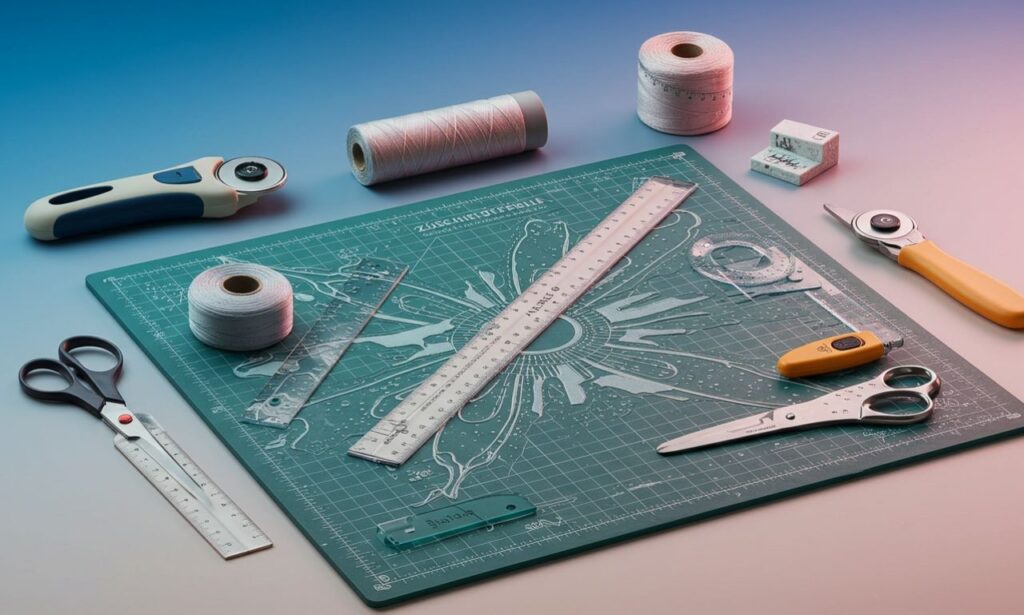In industries where sharp tools meet delicate materials, the right cutting surface is just as important as the cutting tool itself. This is where zuschneidfelle—a term commonly used in German-speaking regions to describe high-quality cutting mats—play a vital role. These mats are essential work surfaces used across various professions and manufacturing environments. Whether in a leather workshop, textile factory, print studio, or automated cutting machine, zuschneidfelle enhance accuracy, protect equipment, and improve safety.
In this article, we will explore the full scope of zuschneidfelle—what they are, how they’re used, the materials they’re made from, and why they’re considered indispensable in professional settings. This comprehensive guide also covers how to choose the right mat, maintain it, and understand the evolving technology behind this seemingly simple but crucial tool.
What Are Zuschneidfelle?
The word “zuschneidfelle” roughly translates to “cutting skins” or “cutting mats.” These surfaces are specifically designed to withstand repeated cuts from sharp blades such as utility knives, rotary cutters, scalpels, or machine-guided knives. Unlike a standard desk mat or generic plastic board, zuschneidfelle are engineered for heavy-duty, high-precision tasks.
Their core function is to provide a stable, resilient surface that not only allows for smooth, precise cutting but also protects blades from dulling and work surfaces from damage. They come in various sizes and thicknesses and can be tailored for specific tasks, ranging from manual crafting to automated cutting systems used in mass production.
Why Zuschneidfelle Are Essential
Zuschneidfelle have grown in popularity because they serve multiple critical purposes:
1. Enhanced Cutting Accuracy
A stable, non-slip surface is vital for precise cutting. Zuschneidfelle provide just the right amount of resistance to allow smooth blade movement while preventing slips or jagged edges. This is especially important in tasks where millimeter-level precision is required.
2. Protection for Workbenches and Machinery
Frequent cutting on hard surfaces can severely damage tables, machines, and the tools themselves. Zuschneidfelle act as a shock-absorbing barrier, preserving the integrity of your workstation.
3. Blade Longevity
Cutting on overly rigid surfaces wears out blades quickly. Zuschneidfelle mats are engineered to be gentle on blades, extending their sharpness and reducing replacement costs over time.
4. User Safety
A consistent cutting surface significantly reduces the chance of blades slipping. This leads to fewer injuries in professional and industrial settings, especially where sharp tools are in constant use.
5. Noise and Vibration Control
When used on machines, these mats absorb vibration and reduce operational noise—factors that not only contribute to a better working environment but also help in precision cutting tasks.
Common Applications of Zuschneidfelle
Zuschneidfelle are highly adaptable cutting mats used across numerous professional fields. Their durable construction and precise cutting surface make them an essential tool in both artisanal and industrial settings. Below are some of the key industries where zuschneidfelle play a vital role:
Textile and Apparel Industry
In fashion production and tailoring, zuschneidfelle are crucial for cutting fabric patterns, adjusting seams, and preparing garments. Their anti-slip surface keeps materials firmly in place, allowing designers and technicians to perform intricate cuts with precision and consistency.
Leather Goods and Craftsmanship
Leatherworkers depend on zuschneidfelle for tasks like cutting hides, punching holes, and skiving edges. These mats offer a firm, even surface that reduces movement, supports accurate detailing, and minimizes material waste during crafting or production.
Printing, Signage, and Graphic Arts
In print studios and graphic design workshops, zuschneidfelle are commonly used to cut paper, vinyl, foam board, and other flat materials. Thanks to their self-healing properties and smooth texture, these mats maintain a clean surface even after repeated blade passes, helping ensure crisp, accurate lines.
Industrial Manufacturing and Automation
In heavy-duty production environments, zuschneidfelle are often installed into cutting machines or workstations. They serve as impact-absorbing surfaces for CNC routers, laser cutters, and automated blade systems working with rubber, plastic, foam, or insulation materials.
Laboratories and Medical Facilities
In scientific and medical settings, zuschneidfelle are used during sample preparation, dissection, or sterile packaging. Their chemical-resistant, easy-to-clean surfaces make them suitable for repeated use in environments that require both hygiene and precision cutting.
These applications demonstrate the wide-ranging utility of zuschneidfelle, proving their value in any context where accuracy, safety, and material protection are priorities.
Materials Used in Zuschneidfelle
The performance of a zuschneidfell depends heavily on the materials used. Different materials offer varying benefits, depending on the specific application.
Polyurethane (PU)
PU mats are known for their durability and self-healing properties. They return to their original state after being cut, making them ideal for repeated use in industrial settings.
PVC (Polyvinyl Chloride)
PVC cutting mats are popular in workshops and schools due to their affordability and flexibility. While not as durable as PU, they offer good surface protection for lighter tasks.
Rubber-Based Blends
Rubber mats offer excellent grip and softness, making them ideal for delicate work. They’re also known for their shock-absorbing properties, making them useful in medical or electronics work.
Composite Materials
Some advanced zuschneidfelle are made from a mix of materials to provide a balance of flexibility, durability, and self-healing. These are often used in automated machinery or high-volume environments.
How to Choose the Right Zuschneidfell
When choosing a zuschneidfell, consider the following:
1. Size and Coverage Area
Choose a size that fits your workspace. For handheld tasks, a small mat is fine. For industrial use or fabric cutting, you may need a full-table mat.
2. Thickness
Thicker mats (typically 5 mm to 20 mm) offer more durability and better vibration control, which is ideal for industrial applications.
3. Hardness Rating
Some tasks require a firmer surface, while others benefit from a softer, more forgiving material. Hardness is measured in Shore A units, and your choice should match your cutting pressure and tool type.
4. Self-Healing Capabilities
If you do a lot of repetitive cutting in the same areas, choose a mat that is self-healing to avoid grooves and uneven surfaces.
5. Resistance to Chemicals and Heat
In labs or workshops where chemicals or heat tools are used, opt for mats with chemical resistance and thermal tolerance.
Maintenance Tips for Zuschneidfelle
To ensure the longevity of your zuschneidfell, follow these best practices:
-
Rotate the mat periodically to spread wear evenly
-
Clean it regularly with mild soap and water
-
Avoid sharp jabs or serrated tools that may tear the surface
-
Store the mat flat to avoid warping or curling
-
Keep away from direct heat sources that could deform the material
Proper care not only extends the mat’s life but also helps maintain cutting accuracy.
Technological Advancements in Zuschneidfelle
Modern zuschneidfelle are evolving with new features and materials that enhance functionality:
Gridded Surfaces
Some mats come with printed measurement guides, angles, and rulers to help with precision tasks.
Magnetic Mats
Magnetized versions are great for working with metal pieces or tools, keeping components in place.
Anti-Static Properties
For electronics work, mats with anti-static protection help safeguard sensitive components from electrical discharge.
Multi-Layer Construction
Newer models have multiple layers designed to absorb deeper cuts and protect the inner core, enhancing durability.
Sustainable and Eco-Friendly Zuschneidfelle
With growing awareness of environmental impact, manufacturers are now offering eco-conscious cutting mats made from:
-
Recycled rubber or plastics
-
Biodegradable compounds
-
Non-toxic adhesives and dyes
-
Low-energy manufacturing processes
These mats offer the same performance but with a smaller ecological footprint.
Where to Buy Zuschneidfelle
Zuschneidfelle are available through:
-
Specialty industrial suppliers
-
Craft and leatherworking shops
-
Online marketplaces
-
Direct from manufacturers (custom orders for size or branding)
Prices vary based on size, material, and intended use, with premium models offering greater longevity and precision.
Final Thoughts
Zuschneidfelle may appear to be simple mats, but they are critical to achieving clean, accurate, and safe cuts in a wide range of industries. From protecting tools and work surfaces to enabling better productivity and reducing waste, these mats are a smart investment for professionals who work with precision.
As technology and materials continue to improve, the capabilities of zuschneidfelle will expand further—supporting even more complex workflows, automation, and sustainable practices.







